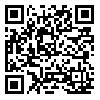Volume 21, Issue 1 (3-2024)
jor 2024, 21(1): 1-16 |
Back to browse issues page
Download citation:
BibTeX | RIS | EndNote | Medlars | ProCite | Reference Manager | RefWorks
Send citation to:



BibTeX | RIS | EndNote | Medlars | ProCite | Reference Manager | RefWorks
Send citation to:
Afzali P, Rezapour A, Rezaee Jordehi A. An Optimized Deep Learning Model for Handwriting Verification. jor 2024; 21 (1) :1-16
URL: http://jamlu.liau.ac.ir/article-1-2189-en.html
URL: http://jamlu.liau.ac.ir/article-1-2189-en.html
Department of Computer Engineering, Astaneh Ashrafieh Branch, Islamic Azad University, Astaneh Ashrafieh, Iran , Abdoreza.Rezapour@iau.ac.ir
Abstract: (1254 Views)
Handwriting is known as a common way of communication among human societies and a behavioral biometric for authentication. Writer verification of a handwritten text has significant applications in the field of security systems, forensics and historical and literary documents. In this paper, for the first time, an optimized deep architecture utilizing Siamese network, transfer learning and gray wolf optimization algorithm is presented in order to offline writer verification from Persian handwriting. Due to the lack of access to an appropriate dataset in Persian language, a dataset including Persian words, sentences and digits has been collected. In addition, two well-known datasets of IAM and KHATT were also used to analyze the proposed method. The results of experiments and evaluations on these datasets emphasize the ability of the proposed approach to writer verification from handwriting in different languages and various writing styles.
Keywords: Writer Verification, Handwriting, Siamese Network, Transfer Learning, Gray Wolf Optimizer Algorithm
Type of Study: Research |
Subject:
Special
Received: 2023/03/23 | Accepted: 2023/08/19 | Published: 2024/03/20
Received: 2023/03/23 | Accepted: 2023/08/19 | Published: 2024/03/20
Send email to the article author
| Rights and permissions | |
 |
This work is licensed under a Creative Commons Attribution-NonCommercial 4.0 International License. |






